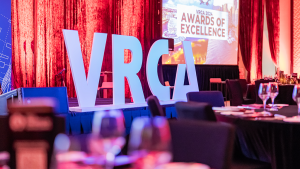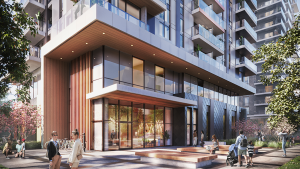It is seemingly impossible in design, a decade in the making, two years behind schedule and eight times as expensive as originally proposed.
Calatrava’s laminated glass bridge deck made in Canada
REDDING, CALIF.
It is seemingly impossible in design, a decade in the making, two years behind schedule and eight times as expensive as originally proposed.
Yet, a new functional work of world-class art has leaders of Redding, in Northern California, gushing over what they hope will become their new landmark.
Spanish architect Santiago Calatrava, who designed this summer’s Olympic Sports Complex in Athens, has crafted a unique harp-shaped Sundial Bridge to link Redding’s past and future.
The $23.5 million (all funds U.S.) footbridge is part of the attempts of Redding, located in the hot, sunny Sacramento Valley, to reinvent itself as a destination for tourists heading into the mountains separating it from Oregon.
More than symbolizing the 87,000-resident city alone, Redding leaders hope the delicate, translucent bridge will be identified with all of far northern California, an area so ignored by more populated regions to the south that residents once thought of seceding to form the fanciful new state of Jefferson.
So eye-catching is the design that leaders speculate it may become America’s second-most recognized bridge, behind only San Francisco’s Golden Gate.
“It’s the creation of a landmark. That’s not so easy to do any more,” Bob Warren, manager of Redding’s Convention and Visitors Bureau, said.
“I think people will see this as above and beyond the normal challenge a municipality would take on, particularly a community of our size.”
The city originally wanted a more plebeian $3-million footbridge over the Sacramento River to connect what is now 65 kilometres of a planned 190-kilometre bike trail, to link two pieces of Turtle Bay Exploration Park and its child-friendly museum, and to refocus attention on the city’s cool, green river corridor.
In stepped the Redding-based McConnell Foundation with an offer to pay the balance toward a more elaborate design. The cost hasn’t stopped escalating since.
After other plans and designers didn’t work out, foundation vice-president John Mancasola called Calatrava’s office in Zurich, Switzerland. Calatrava himself happened to pick up the phone.
Though he’d never built in the United States, and most of his designs are in urban areas of Europe, Calatrava jumped at the chance to create a masterpiece against the uncluttered natural setting of the Sacramento River.
So great is his world renown that he was granted his California engineering licence the same day he applied.
Calatrava said he wanted a bridge design that was “right on the edge of the possible,” functional yet also a destination in its own right.
“The city of Redding, the McConnell Foundation and Turtle Bay Exploration Park all had the desire not only to build a useful crossing at this point, but also to increase people’s appreciation for this wonderful but very sensitive environment,” Calatrava said in a statement.
“Their vision challenged me to imagine a bridge that is exceptionally lightweight and translucent, and that invites people to linger by the river, to open their eyes to the water and the sky.”
The foundation has since indulged every whim for the sculptor and engineer. When Calatrava changed his mind — twice — about rounding off a corner of a plaza wall, the foundation didn’t blink at the $11,000 cost to replace and then re-replace the section.
Calatrava doesn’t like exposed concrete, so even rarely seen portions of the bridge and its abutments are shielded by broken Spanish tile.
Structural pipes came from Spain, cables from England, the three-layer laminated glass bridge deck from Canada, patio stone from Italy and Mexico.
“We were able to go as wild as you can imagine. You could never do this with just regular government spending,” Warren said.
A 66-metre-tall spire anchors 14 cables that bear the bridge’s weight.
This ultimately transfers 1.36 million kilograms of pressure to a single 35.5- centimetre ball bearing set atop foundation piers, anchored more than 13 metres deep.
The spire marks the hours of the day on the summer solstice.
Redding’s $18-million sports park and its renovated 1935 Art Deco theatre both open later this summer.
A new city hall opened two years ago, a $5-million aquatic centre opened in May 2003 and construction of an $18-million public library is slated to start within six months.
“The bridge is what it takes to bring all the pieces together,” said Shannon Phillips, the McConnell Foundation’s communications and program director.
“Not only will people come up I-5 to see a bridge, but they’ll have something to do while they’re here.”
The extensive involvement of the charity foundation created by the late Leah and Carl McConnell in 1964 drew objections from some residents who worried the community’s future was being planned and paid for by the nonprofit group.
Some believe the bridge is too radical to fit with the city’s traditional past.
But the Sundial Bridge has drawn the nationwide attention that backers craved, along with favourable reviews from art critics and writers who have struggled to compare the structure to something more mundane that readers can envision—an egret’s neck, a construction crane, a harp or a giant fish with its dorsal fin rising high above the river.
Even before it officially opened July 4, it was featured in Time magazine, the New York Times and the Boston Globe.
The American Automobile Association’s VIA magazine has the bridge on the cover of its current issue, and in its first-ever centrefold.
Calatrava, whose projects include the Toronto landmark BCE Place Galleria, has also been commissioned by Ryerson University in Toronto to design its newest academic building.
The Spanish architect-engineer is responsible for some of the most extraordinary buildings of modern times, combining his architectural and engineering backgrounds to provide simple and elegant solutions to complex technical challenges.
Calatrava has designed numerous bridges and won many international design awards.
The Associated Press










Recent Comments
comments for this post are closed